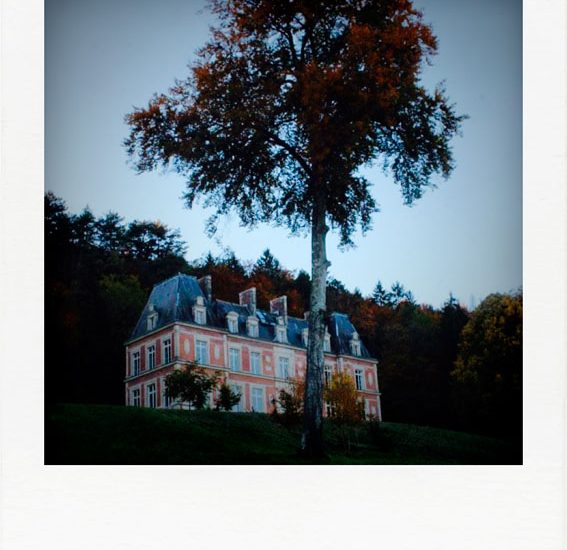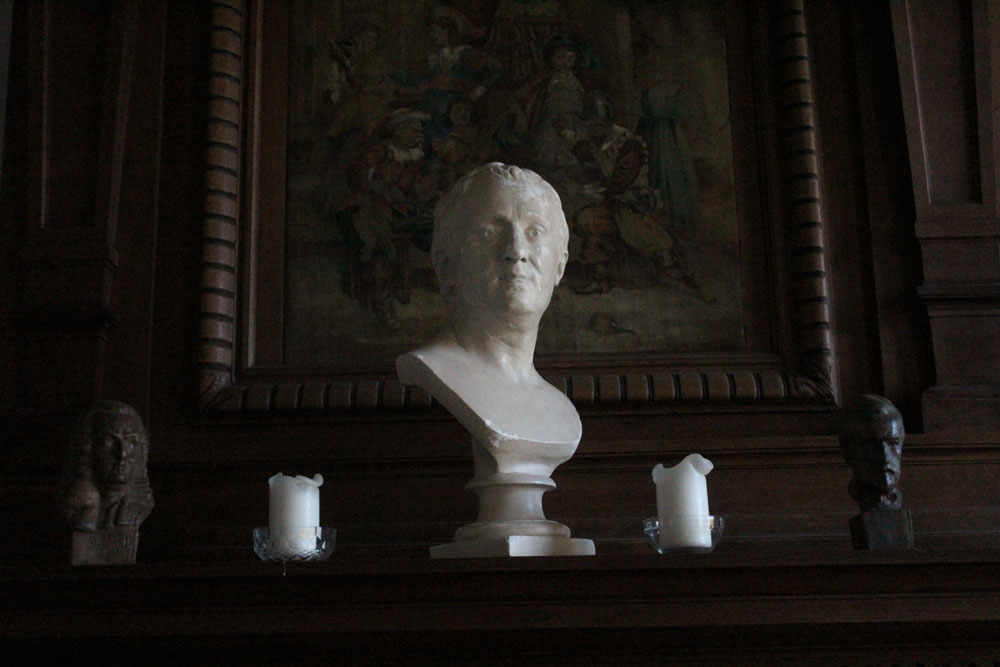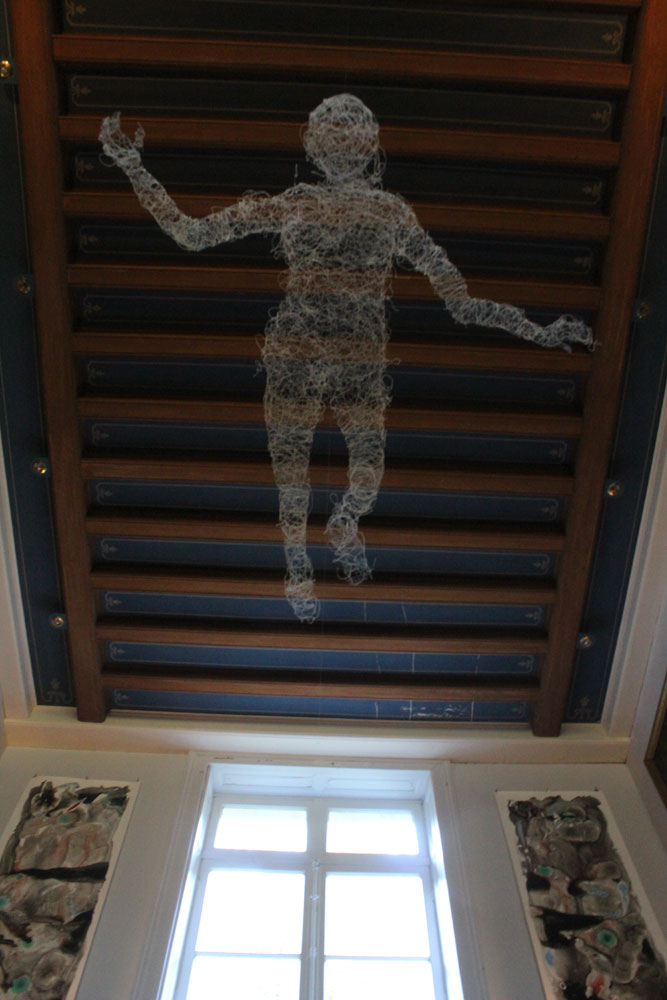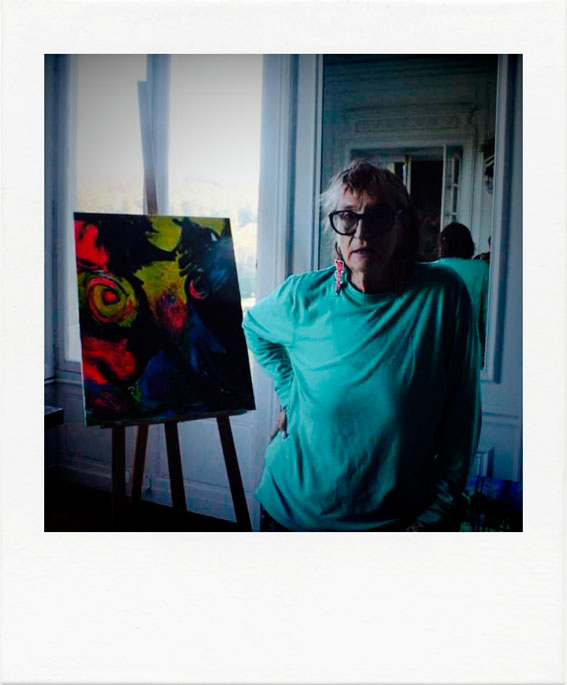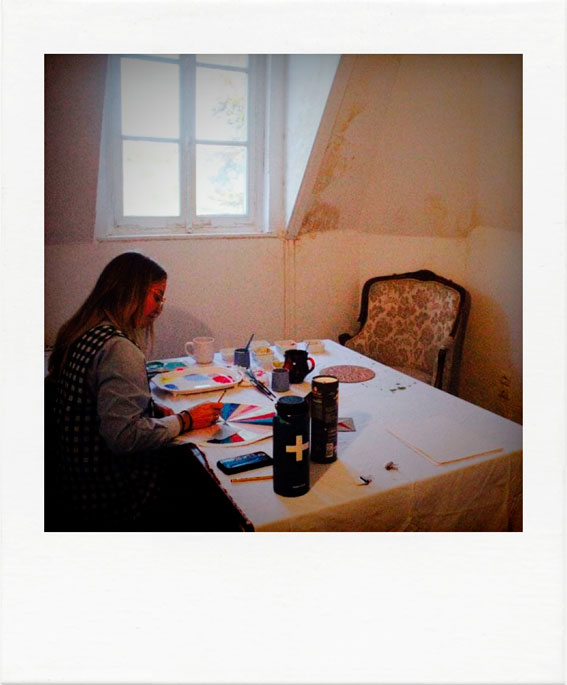English version at the bottom of the page
Mes recherches sur Diderot (futur livre avec Frédéric Chef) devait m’emmener inévitablement au château d’Orquevaux, fief de la famille Caroillon de Vandeul en Haute-Marne.
Contrairement au philosophe Denis Diderot qui vivait chichement, ses descendants n’étaient pas dépourvus quand la bise fut venue…
La fille de Diderot épouse en 1772 un Langrois « capitaine d’industrie », lequel, avec ses trois frères, se constituera, avant et après la Révolution, une énorme fortune (pas toujours de façon très honnête, on peut le dire, y’a prescription).
Albert Caroillon de Vandeul (petit-fils du petit-fils de Diderot) fit bâtir l’actuel château d’Orquevaux en 1897, dans le style Napoléon III, sur un domaine abritant un château plus ancien et « la forge de Jacquot », domaine acheté en 1810, par Abel Caroillon de Vandeul, mari d’Angélique Diderot.
Ainsi, à la mort d’Angélique, le château d’Orquevaux abrite le « petit trésor » de la famille, c’est à dire : les meubles, tableaux et archives du philosophe qui seront dispersés, en 1911, à la mort du dernier Caroillon. C’est la famille Levavasseur (descendants de Diderot également) qui hérite alors du trésor et qui protège une partie des archives dans son château des Ifs en Normandie.
Aujourd’hui, le château d’Orquevaux semble avoir trouvé sa véritable fonction et abrite en résidence des artistes plasticiens, musiciens, danseurs, de toutes nationalités, dans une osmose qui fait rêver grâce à Ziggy Attias, son directeur, et sous le regard attendri de Denis Diderot dont le buste trône dans le salon !
Merci à tous les résidents d’Orquevaux, y compris la direction, pour leur chaleureux accueil !
Histoire du domaine d’Orquevaux
Le domaine, ancien château et la forge de Jacquot, et appartenait au XVIIIe siècle à Louis Antoine Crozat (1700-1770), baron de Thiers, seigneur de Lafauche, Vignory, Semilly, Sexfontaines et Marbéville, militaire et collectionneur d’art français. Il passe ensuite aux mains de Victor-François , duc de Broglie et maréchal de France, et de son épouse , Louise Augustine Crozat de Thiers .
Nicolas Billot remplaça Pelgrin dans l’administration des forges d’Orquevaux vers 1787, propriété du duc de Broglie.
Nicolas Billot, fermier d’Orquevaux, prend possession du domaine et des forges en 1798, suite au séquestre, quitte à indemniser les anciens propriétaires quelques années plus tard.
Claude Poussy, fermier de Dancevoir, en fait l’acquisition en 1791.
Abel CAroillon de Vandeul achète le domaine en 1810.
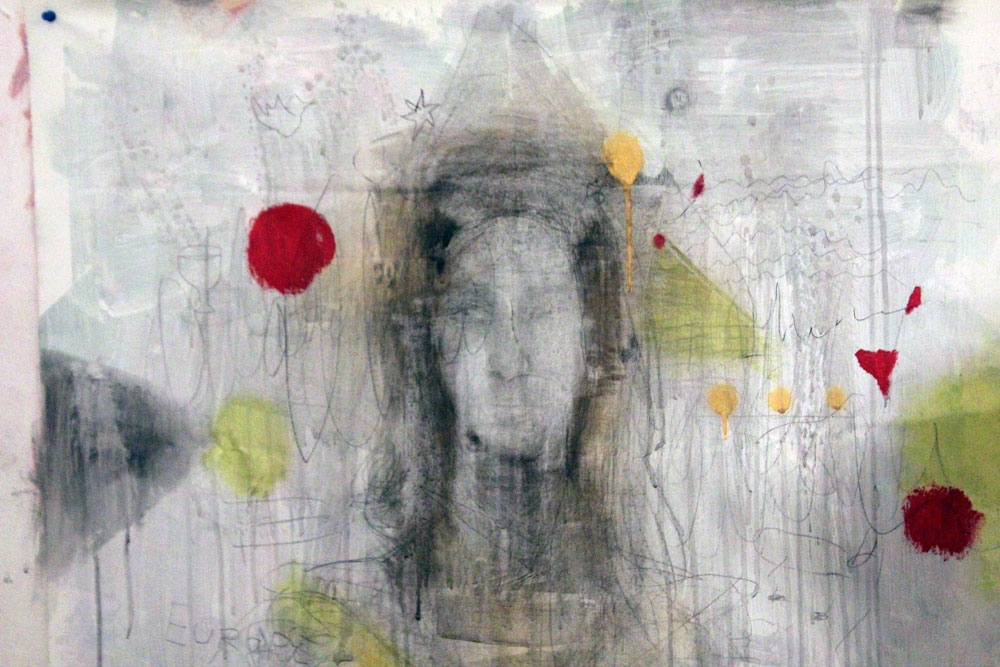
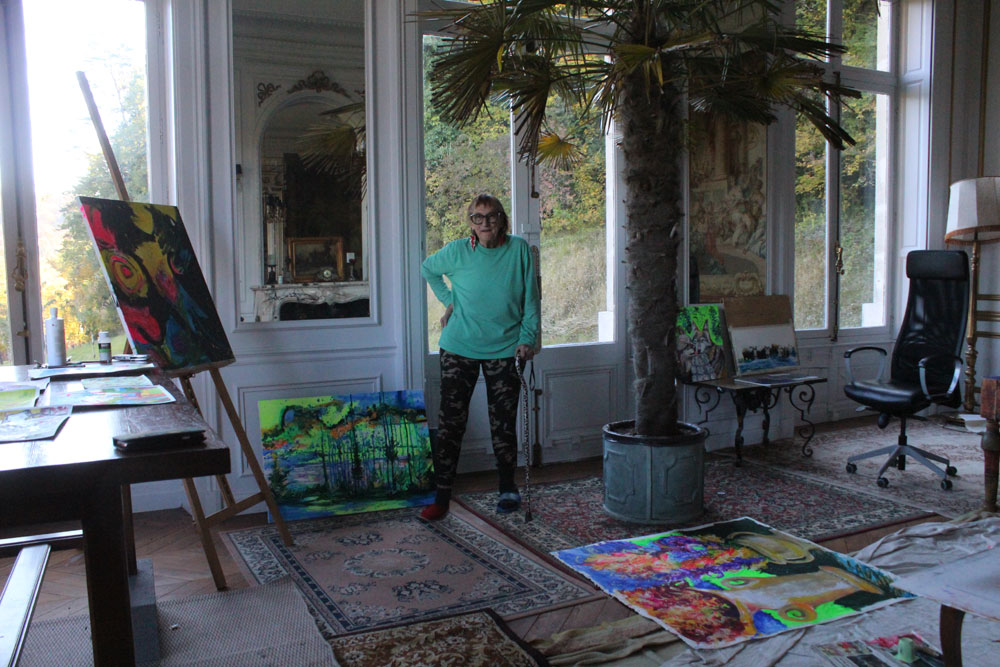
My research on Diderot (future book with Frédéric Chef) inevitably took me to the castle of Orquevaux, stronghold of the Caroillon de Vandeul family in Haute-Marne.
Unlike the philosopher Denis Diderot who lived poorly, his descendants were not destitute when the north wind came …
Diderot’s daughter married in 1772 a Langrois “captain of industry”, who, with his three brothers, would constitute, before and after the Revolution, an enormous fortune (not always in a very honest way, one can say it, y ‘ a prescription).
Albert Caroillon de Vandeul (grandson of Diderot’s grandson) had the current Château d’Orquevaux built in 1897, in the Napoleon III style, on an estate housing an older château and “the Jacquot forge”, purchased in 1810, by Abel Caroillon de Vandeul, husband of Angélique Diderot.
Thus, when Angélique died, Orquevaux castle housed the family’s “little treasure”, that is to say: the furniture, paintings and archives of the philosopher which would be dispersed in 1911, when the last one died. Caroillon. It was the Le Vavasseur family (descendants of Diderot as well) who then inherited the treasure and who hid part of the archives in their Château des Ifs in Normandy.
Today, the castle of Orquevaux seems to have found its true function and houses in residence plastic artists, musicians, dancers, of all nationalities, in an osmosis that makes you dream thanks to Ziggy Attias, its director, and under the tender gaze of Denis Diderot whose bust takes pride of place in the living room!
Thank you to all Orquevaux residents, including management, for their warm welcome!
History of the Orquevaux estate
The estate, former castle and Jacquot’s forge, and belonged in the 18th century to Louis Antoine Crozat (1700-1770), baron of Thiers, lord of Lafauche, Vignory, Semilly, Sexfontaines and Marbéville, soldier and art collector French. It then passed into the hands of Victor-François, Duke of Broglie and Marshal of France, and his wife, Louise Augustine Crozat de Thiers.
Nicolas Billot replaced Pelgrin in the administration of the Orquevaux forges around 1787, owned by the Duke of Broglie.
Nicolas Billot, farmer of Orquevaux, took possession of the estate and the forges in 1798, following the sequestration, even if it meant compensating the former owners a few years later.
Claude Poussy, farmer from Dancevoir, acquired it in 1791.
Abel CAroillon de Vandeul bought the estate in 1810.
